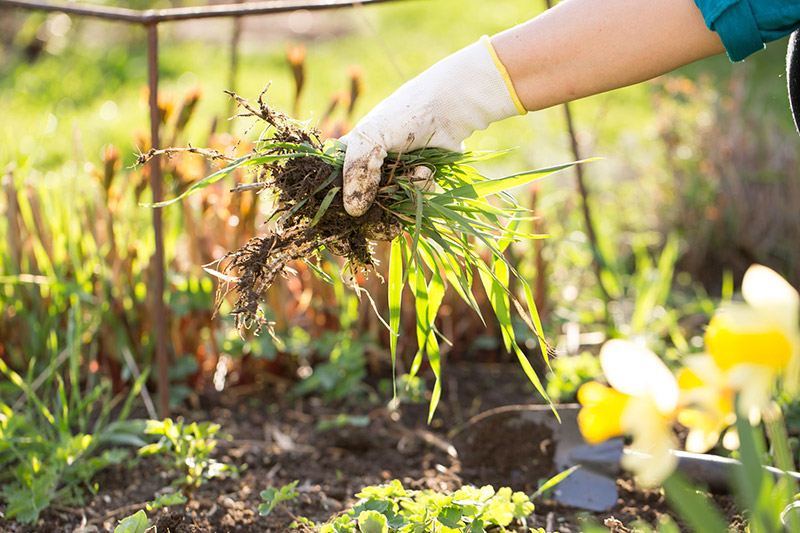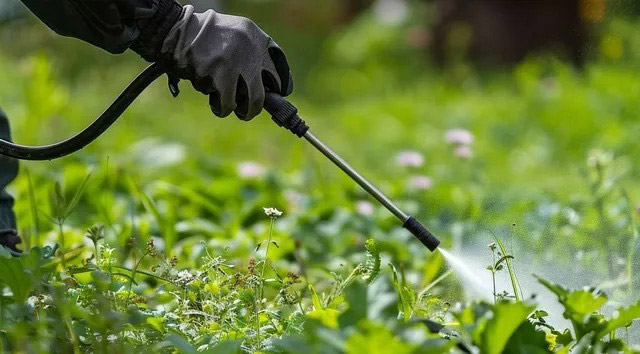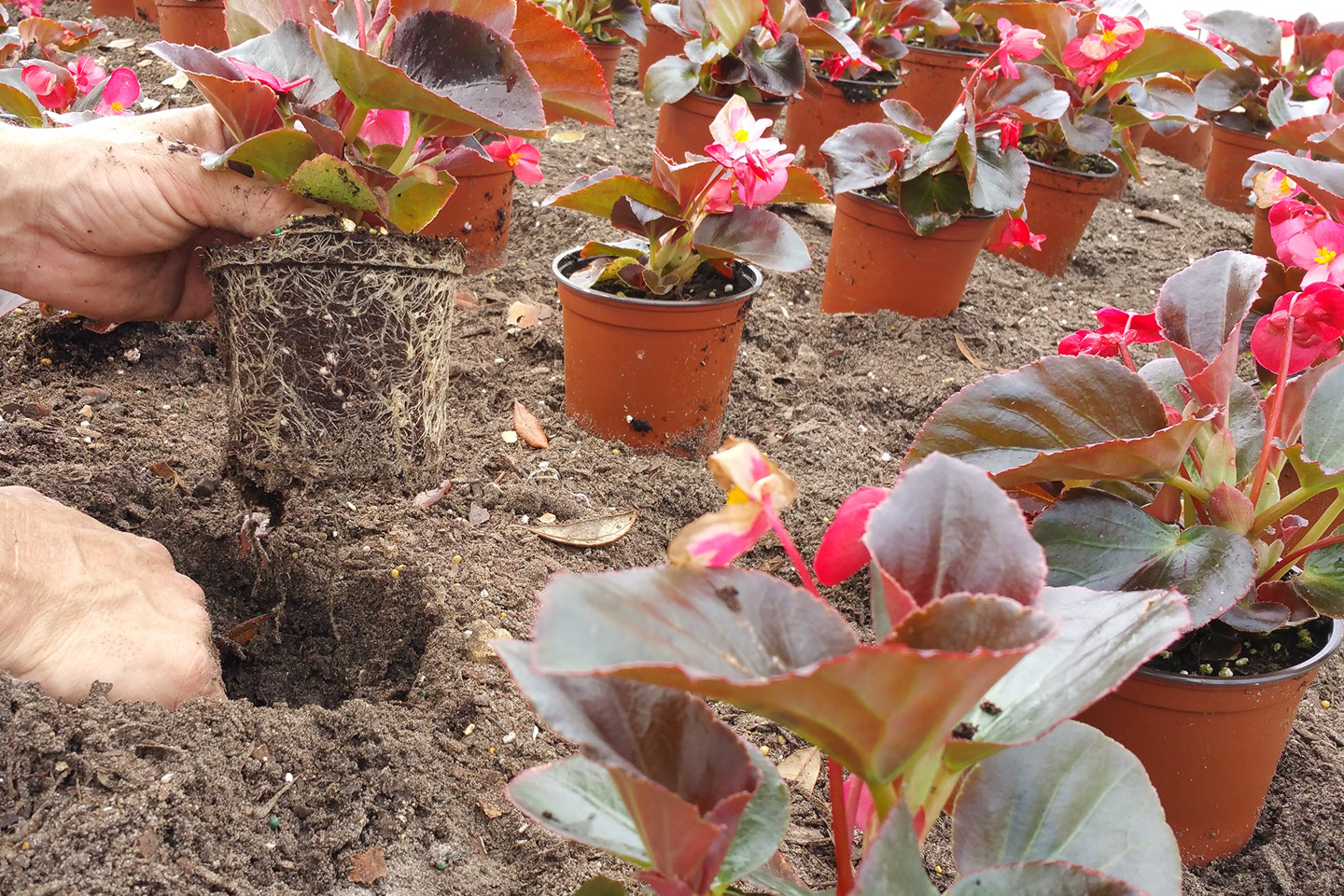Taming Summer Weeds: Landscape Bed Weed Control Challenges and Solutions in Florida - Sit Down with CEPRA
Florida's summer brings sweltering heat, high humidity, and frequent downpours - these conditions encourage rapid plant growth, including the kind we don't want - WEEDS. The hot temperatures combined with the heavy rainfall we receive create the perfect storm for aggressive weed growth, especially in our ornamental beds. When left unmanaged, weeds can quickly overtake your landscape, competing with desirable plants for nutrients, water, and sunlight.
Keeping ornamental beds weed-free in the summer season can feel like an endless battle for Florida homeowners, landscapers, and property managers. But understanding the challenges and adopting proactive strategies can go a long way toward eliminating and preventing these persistent invaders.

By incorporating pre-emergent and post-emergent herbicides into your summer maintenance routine, this will offer an effective solution for preventing and eliminating weeds in Florida's ornamental landscapes.
Why Summer Weed Control is So Difficult in Florida Making Hand-Weeding and a Mulch Layer Alone Insufficient for Long Term Control
- Warm Temperatures and Frequent Rainfall
Summer in Florida creates the perfect storm for weed germination and growth. Weeds thrive in warm, wet soil, and with rain occurring almost daily in many regions, there's little opportunity for beds to dry out and slow their progress. - Fast Growth Cycles
Many summer weeds, like crabgrass, chamberbitter, spurge, and goosegrass, grow quickly and go to seed even faster. Left unchecked for just a short while, they can spread prolifically. - Weed Seed Banks in the Soil
The soil in most Florida landscapes holds years' worth of dormant seeds just waiting for ideal conditions to sprout. Summer provides the heat and moisture that these seeds need to sprout and emerge in the ornamental beds. - Difficulty in Herbicide Timing
Rainy conditions can make it difficult to apply herbicides effectively. Post-emergent herbicides may wash off before they can work and applying pre-emergent herbicides too early or too late in the season will reduce their effectiveness. - Competition with Desirable Plants
Weeds compete with ornamentals for water, nutrients, and space. Some, like nutsedge or torpedograss, can aggressively spread underground, encroaching into established ground covers and ornamental plants.
Pre-Emergent Herbicides: Stopping Weeds Before They Start
Pre-emergent herbicides form a chemical barrier in the soil that prevents weed seeds from germinating. These products are most effective when applied before weeds appear — typically at the start of the rainy season or after a fresh mulch installation.

Benefits of Pre-Emergent Herbicides in the Summer:
- Prevention: Stops annual weeds before they emerge, reducing the need for hand-pulling or repeated spraying.
- Consistency: Maintains a tidy, uniform appearance in ornamental beds.
- Efficiency: Reduces long-term labor costs and herbicide applications.
- Protection for ornamentals: Selective pre-emergent herbicides can be safely used around shrubs, perennials, and groundcovers (always consult the label for plant sensitivity) without harming them.
Common Florida-friendly pre-emergent herbicides:
- Pendimethali
- Prodiamin
- Isoxaben
These pre-emergent herbicides are often applied more than once a year during the active growing periods for best results.
Post-Emergent Herbicides: Eliminating Existing Weeds
While pre-emergent herbicides stop weeds before they sprout, post-emergent herbicides target weeds that are already growing. These products can be selective (killing only certain types of weeds like broadleaf or grassy weeds) or non-selective (killing everything they come into contact with).
Benefits of Post-Emergent Herbicides in Summer:
- Fast control of unwanted weeds that compete with ornamental plants.
- Targeted use allows spot treatment, reducing chemical load.
- Effective control of perenial weeds that pre-emergent herbicides will not control.

Common post-emergent herbicides for Florida ornamentals:
- Glyphosate (non-selective - use carefully around desirable plants)
- 2,4-D or Dicamba (for broadleaf weeds)
- Sethoxydim or Fluazifop (for grassy weeds)
Always read and follow the label for application methods, rates and safety, especially around sensitive ornamentals.
Best Practices for Summer Herbicide Use
- Timing Matters: Apply pre-emergent herbicides just before the rainy season or after cultivation/disturbance of beds.
- Proper Calibration: Use the correct application rate to ensure effectiveness without harming nearby plants.
- Mulch Combination: A 2–3 inch mulch layer enhances pre-emergent performance by blocking light and retaining moisture.
- Post-Rain Checks: After heavy rainfall, inspect ornamental beds for new weed growth and apply post-emergent herbicides as needed.
- Rotate Chemistries: To prevent resistance, rotate herbicide modes of action each season.
A Year-Round Mindset for Summer Success
The summer season in Florida is no time to be reactive with weed control. By combining pre-emergent and post-emergent herbicides, ornamental beds can remain healthy, attractive, and largely weed-free despite the challenges of summertime temperatures and rainfall. This integrated approach not only saves time and labor but also protects the health and appearance of your landscape.
Remember, weeds are opportunistic - but with the right knowledge and a consistent approach, they don't have to dominate your landscape this summer. With the right strategy and timing, you can enjoy your Florida landscape in full bloom - without the weeds stealing the show.
